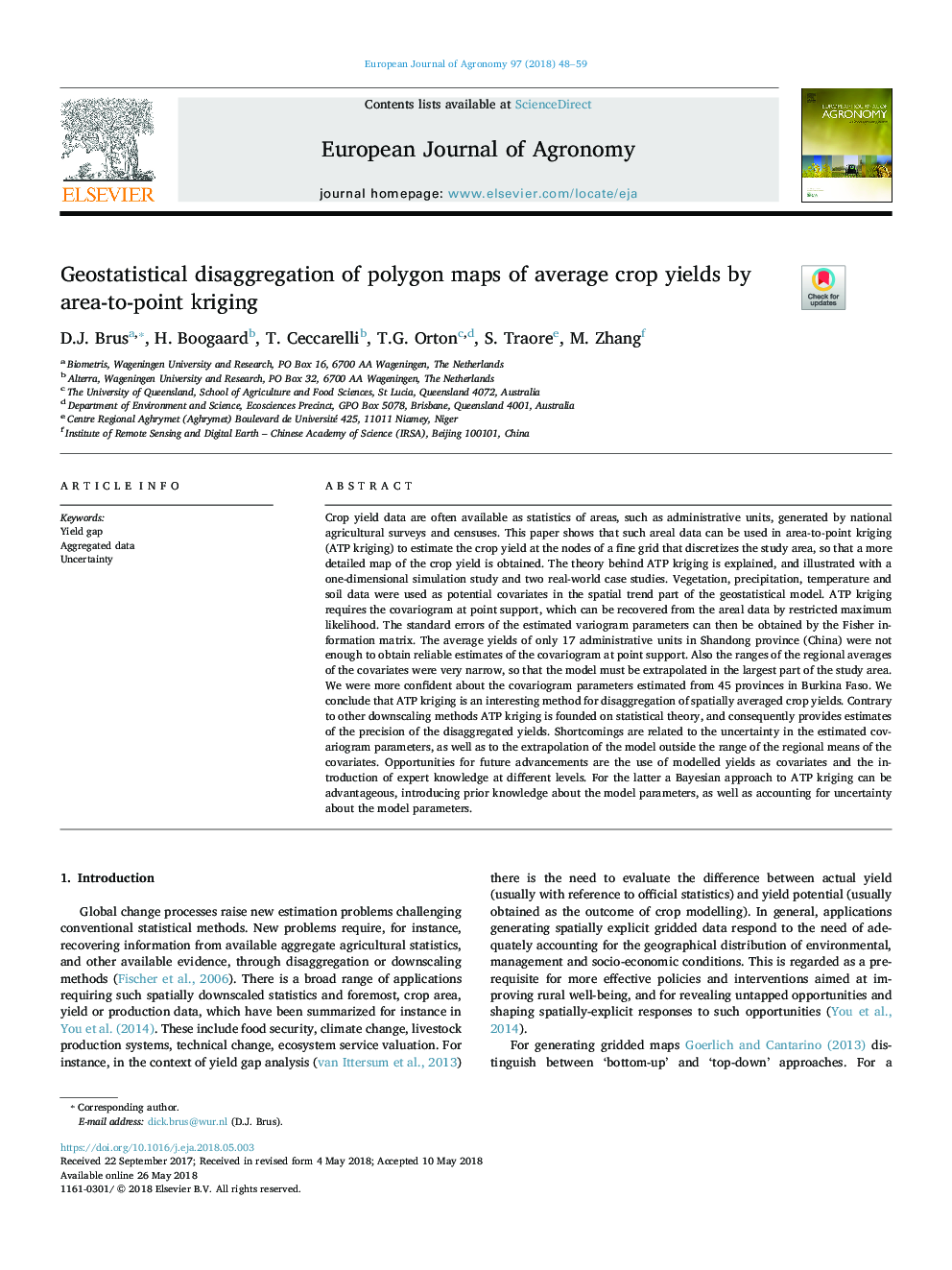| Article ID | Journal | Published Year | Pages | File Type |
|---|---|---|---|---|
| 8878884 | European Journal of Agronomy | 2018 | 12 Pages |
Abstract
Crop yield data are often available as statistics of areas, such as administrative units, generated by national agricultural surveys and censuses. This paper shows that such areal data can be used in area-to-point kriging (ATP kriging) to estimate the crop yield at the nodes of a fine grid that discretizes the study area, so that a more detailed map of the crop yield is obtained. The theory behind ATP kriging is explained, and illustrated with a one-dimensional simulation study and two real-world case studies. Vegetation, precipitation, temperature and soil data were used as potential covariates in the spatial trend part of the geostatistical model. ATP kriging requires the covariogram at point support, which can be recovered from the areal data by restricted maximum likelihood. The standard errors of the estimated variogram parameters can then be obtained by the Fisher information matrix. The average yields of only 17 administrative units in Shandong province (China) were not enough to obtain reliable estimates of the covariogram at point support. Also the ranges of the regional averages of the covariates were very narrow, so that the model must be extrapolated in the largest part of the study area. We were more confident about the covariogram parameters estimated from 45 provinces in Burkina Faso. We conclude that ATP kriging is an interesting method for disaggregation of spatially averaged crop yields. Contrary to other downscaling methods ATP kriging is founded on statistical theory, and consequently provides estimates of the precision of the disaggregated yields. Shortcomings are related to the uncertainty in the estimated covariogram parameters, as well as to the extrapolation of the model outside the range of the regional means of the covariates. Opportunities for future advancements are the use of modelled yields as covariates and the introduction of expert knowledge at different levels. For the latter a Bayesian approach to ATP kriging can be advantageous, introducing prior knowledge about the model parameters, as well as accounting for uncertainty about the model parameters.
Keywords
Related Topics
Life Sciences
Agricultural and Biological Sciences
Agronomy and Crop Science
Authors
D.J. Brus, H. Boogaard, T. Ceccarelli, T.G. Orton, S. Traore, M. Zhang,
